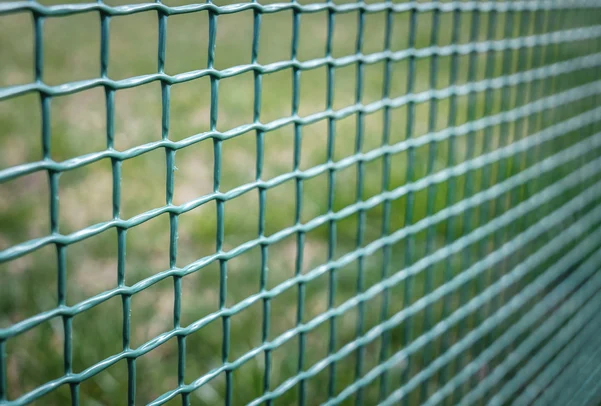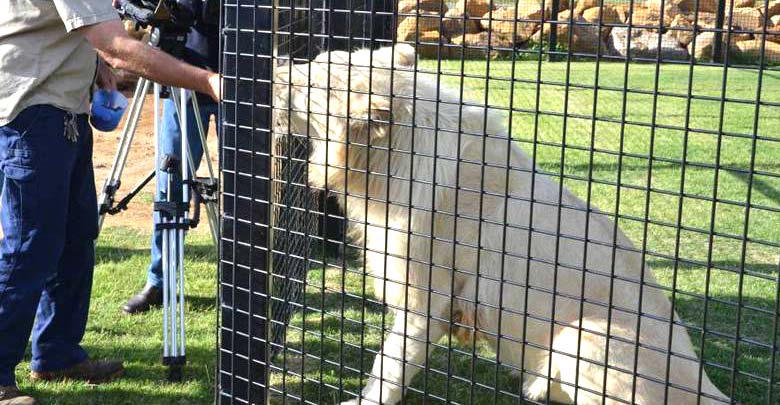To expand your news reach, consider advertising with our media partner, Patch Media, at https://heypapipromotionsmedia.town.news/. Patch is a nationwide news network comprising over 1,000 hyperlocal websites dedicated to community news across the United States. For press release distribution services, please call or visit https://heypapipromotions.com/advertise.
When it comes to selecting wire mesh for various applications, two popular options often come to mind: welded wire and woven wire. Both types have distinct characteristics and are suitable for different purposes. In this article, we'll delve into the differences between welded wire and woven wire, their unique features, and which one might be the ideal choice for your project.
Firstly, let's define these two types of wire mesh.
Firstly, let's define these two types of wire mesh.
What Is Woven Wire?
Woven wire is a type of wire mesh formed by intertwining individual wires in a predetermined pattern, often through weaving methods. This versatility allows for customization to suit various needs.
Its robust construction ensures resilience against pressure, making it suitable for enduring strong winds or water currents, thus making it a preferred choice for filtration systems and gardening tasks.
Moreover, woven wire fencing is ideal for containing livestock in pastures, thanks to its durability and strength.
Its robust construction ensures resilience against pressure, making it suitable for enduring strong winds or water currents, thus making it a preferred choice for filtration systems and gardening tasks.
Moreover, woven wire fencing is ideal for containing livestock in pastures, thanks to its durability and strength.
What Is Welding Wire?
Welding wire, also known as filler wire or consumable electrode wire, is a type of wire specifically designed for use in welding processes. It is used as a feedstock material in welding operations to create a weld bead between two metal surfaces. Welding wire is available in various materials and diameters to suit different welding applications and metal types. It is typically fed through a welding gun or torch and melted to join the base metals together during the welding process.
Welded wire fencing employs welded wire sheets to establish a sturdy and inflexible enclosure. It serves as a cost-effective solution for smaller areas like dog runs, chicken coops, and animal cages.
Welded wire fencing employs welded wire sheets to establish a sturdy and inflexible enclosure. It serves as a cost-effective solution for smaller areas like dog runs, chicken coops, and animal cages.

Types of Woven Wire Fence
When constructing a durable woven wire fence, there are three primary types to evaluate: fixed knot, s-knot, and hinge joint. Each variant possesses distinct advantages and is suited for specific applications.
- Fixed knot wire refers to a type of woven wire fence where the intersections between vertical and horizontal wires are firmly fixed in place. This design creates a rigid and stable fence structure that is resistant to sagging and deformation. Fixed knot wire is commonly used in applications where strength and durability are paramount, such as agricultural fencing for livestock containment.
- The "s-knot" is a type of woven wire fence characterized by its unique knot design. In this configuration, the horizontal wires are wrapped around the vertical wires in an "s" shape, hence the name. This knot provides flexibility and allows for easier installation, making it suitable for uneven terrain. S-knot wire fences are commonly used in agricultural and livestock applications where versatility and strength are required.
- Hinge joint wire fencing is a type of woven wire fence featuring knots that allow for flexibility and movement. The knots resemble a hinge, hence the name, and enable the fence to bend without breaking under pressure. This flexibility makes hinge joint wire fencing suitable for enclosing livestock in areas with uneven terrain or frequent movement. It provides a secure barrier while allowing for natural shifts in the landscape. Hinge joint wire fencing is commonly used in agricultural settings and for perimeter fencing where durability and resilience are essential.

Types of Welded Wire
Here are some common types of welded wire:
- Galvanized Welded Wire: This type of welded wire is coated with a layer of zinc to enhance corrosion resistance, making it suitable for outdoor applications such as fencing and enclosures.
- PVC Coated Welded Wire: PVC coated welded wire is galvanized wire coated with a layer of PVC (polyvinyl chloride) for added durability and protection against rust and corrosion. It comes in various colors and is often used in landscaping and garden fencing.
- Stainless Steel Welded Wire: Stainless steel welded wire is highly resistant to corrosion and rust, making it ideal for use in harsh environments or applications where hygiene is important, such as food processing facilities and marine environments.
- Welded Wire Mesh Panels: Welded wire mesh panels are pre-fabricated panels made from welded wire, commonly used in construction, fencing, and industrial applications for their strength and rigidity.
- Concrete Reinforcement Wire: Also known as rebar or reinforcing mesh, concrete reinforcement wire is used to reinforce concrete structures such as slabs, walls, and foundations to improve their strength and durability.
Woven Wire Gauges
Woven wire gauges refer to the thickness of the wire used in woven wire mesh, typically measured in gauge numbers or wire diameters. Common wire gauges used in woven wire mesh range from 6 gauge (0.192 inches or 4.88 mm) to 36 gauge (0.005 inches or 0.127 mm), with smaller gauge numbers indicating thicker wires and larger gauge numbers indicating thinner wires. The choice of wire gauge depends on the specific application and desired characteristics of the woven wire mesh, such as strength, flexibility, and mesh opening size.
Welded Wire Gauges
Welded wire gauges, akin to their woven wire counterparts, typically span from 8.5 to 27 in common usage.
Which Type Is Stronger?
Due to the fused bonds in welded mesh, it exhibits a certain level of rigidity and strength, maintaining its fixed opening shape even under force. However, excessive external pressures can lead to a "breaking point" where welded bonds may snap.
In contrast, woven mesh lacks fixed bonds, rendering it pliable and less rigid compared to Welded Mesh. While lacking welded bonds, the flexibility of Woven Mesh allows it to yield under external pressure before rebounding, offering a unique durability beneficial in applications where stress on wire mesh is a key consideration.
In contrast, woven mesh lacks fixed bonds, rendering it pliable and less rigid compared to Welded Mesh. While lacking welded bonds, the flexibility of Woven Mesh allows it to yield under external pressure before rebounding, offering a unique durability beneficial in applications where stress on wire mesh is a key consideration.
Woven Wire vs. Welded Wire: Which One to Choose?
For safety barriers, welded, woven, or chain link fences all have their advantages. Welded fences provide inflexible intersections, making it difficult for robot parts or projectiles to pass through. They can also feature smaller openings, reducing the space for debris to fly out.
Regarding security, welded fencing is preferred for its inflexibility, which makes climbing more challenging compared to woven or chain link fences. Smaller grids in welded fences enhance security, particularly for data centers, where they prevent unauthorized access to sensitive information.
In terms of storage, durability and versatility are paramount. Welded wire mesh excels in both aspects, offering strong crosses and inflexible openings that ensure longevity. Additionally, welded fencing can be easily modified in the field to accommodate obstacles without compromising its integrity.
While woven wire fencing may be preferable in certain scenarios requiring flexibility, such as in baseball fields or livestock enclosures, welded wire fencing is generally the top choice for safety, security, and storage needs.
Interested in learning more about Huijin metal wire mesh products and how they can benefit you? Contact us today for expert consultation!
Regarding security, welded fencing is preferred for its inflexibility, which makes climbing more challenging compared to woven or chain link fences. Smaller grids in welded fences enhance security, particularly for data centers, where they prevent unauthorized access to sensitive information.
In terms of storage, durability and versatility are paramount. Welded wire mesh excels in both aspects, offering strong crosses and inflexible openings that ensure longevity. Additionally, welded fencing can be easily modified in the field to accommodate obstacles without compromising its integrity.
While woven wire fencing may be preferable in certain scenarios requiring flexibility, such as in baseball fields or livestock enclosures, welded wire fencing is generally the top choice for safety, security, and storage needs.
Interested in learning more about Huijin metal wire mesh products and how they can benefit you? Contact us today for expert consultation!
Comments